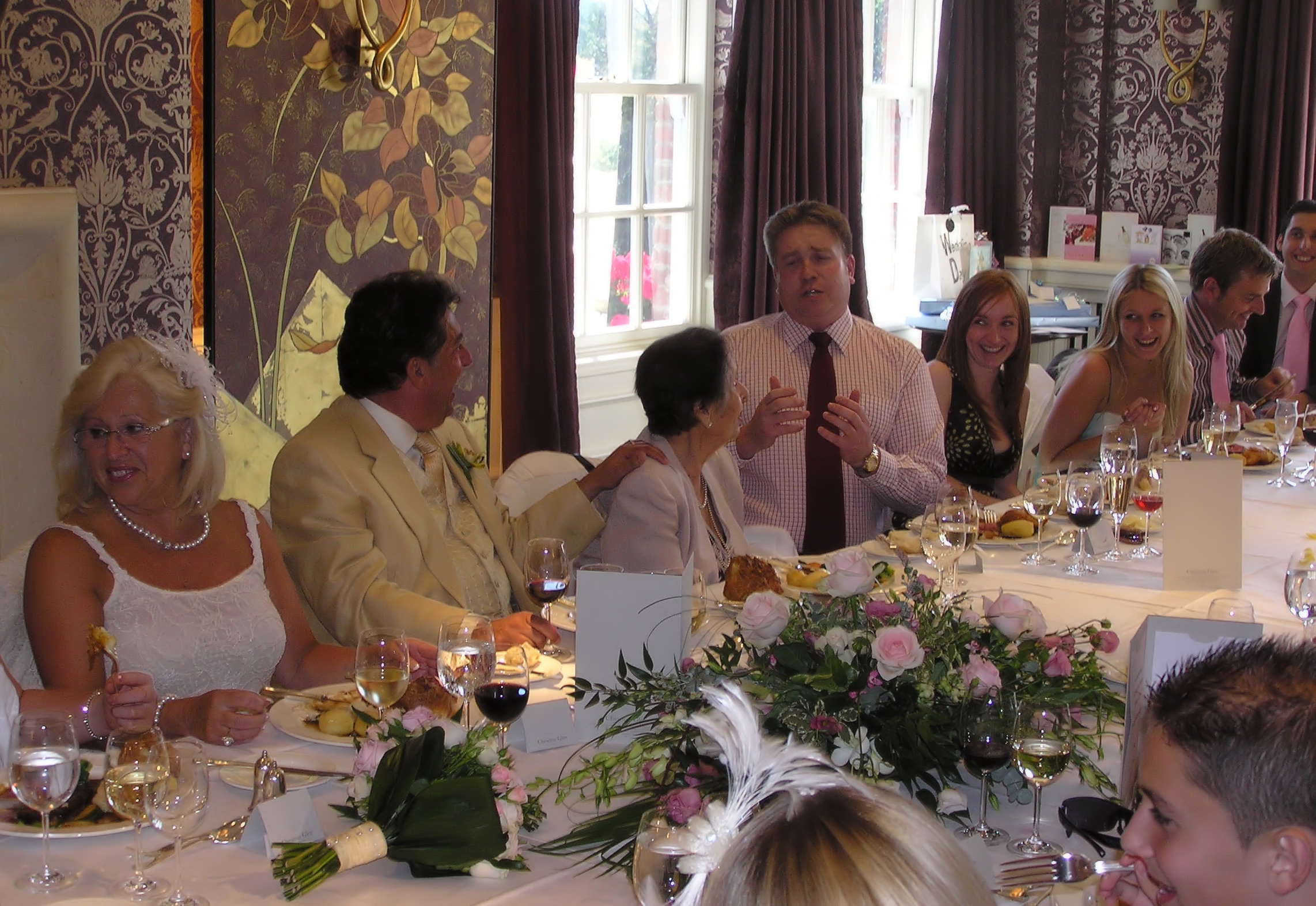Rules of a Small Talk:
 Anyone who‘s been caught at a wedding reception or a cocktail party discussing recent precipitation knows that making small talk isn‘t as easy as it sounds. On the contrary, conversing with strangers can be awkward, stilted, even painful. But there is an art to it, and it can be mastered. “A golden rule is that you don‘t have to be brilliant―just nice.”
Anyone who‘s been caught at a wedding reception or a cocktail party discussing recent precipitation knows that making small talk isn‘t as easy as it sounds. On the contrary, conversing with strangers can be awkward, stilted, even painful. But there is an art to it, and it can be mastered. “A golden rule is that you don‘t have to be brilliant―just nice.”
Here you can find easy-to-follow-rules or navigating sticky small-talk situations with style and grace.
1. Do a little homework:
Try to come up with two or three things to talk about in case the conversation runs dry. Think about the key guests and what they enjoy doing, what they are up to. To keep your conversation timely and lively, scan newspaper headlines and movie and book reviews, so you would always be updated, and will have theme in mind.
2. Greet People Appropriately:
 You might wonder "to kiss or not to kiss"? Generally, a firm handshake is a safe, neutral bet. In social situations where faces are more familiar, the rules soften. If someone’s a good friend, y can kiss him or her, and if someone makes that overture to you, respond accordingly.
You might wonder "to kiss or not to kiss"? Generally, a firm handshake is a safe, neutral bet. In social situations where faces are more familiar, the rules soften. If someone’s a good friend, y can kiss him or her, and if someone makes that overture to you, respond accordingly.
3. Remember names:
Introductions tend to pass in a blur, with both parties quickly blurting out names and then taking sips of wine. As a result, no one remembers who anyone is. The solution: Slow down and stay present. It is a good idea to repeat the names once or twice. If someone has an unusual name, take time to learn it. Similarly, if someone mumbles, ask politely if they can repeat their names over again.
If you forget a name, discreetly ask a third party for help, or listen for it in conversation. If all else fails, come clean.
4. Don't hold back:
 Begin the conversation by giving the other person something to work with. But don’t put her to work. For example, if asked what you do for a living, don’t give the short answer, thereby forcing the other person to scramble for more questions.
Begin the conversation by giving the other person something to work with. But don’t put her to work. For example, if asked what you do for a living, don’t give the short answer, thereby forcing the other person to scramble for more questions.
5. Draw the other person out:
People love talking about themselves, so listen to them. Questions can also be utterly superficial―to begin with. Make statements about a person, what something means to them, that will open up a lot of other topics.
6. When in doubt, discuss the setting:
 If you comment on the good music or the interesting floral arrangements or how long a line for food is, and the other person agrees, that means they’re willing to talk to you. Another fail-safe, setting-specific question is “How do you know the host?”
If you comment on the good music or the interesting floral arrangements or how long a line for food is, and the other person agrees, that means they’re willing to talk to you. Another fail-safe, setting-specific question is “How do you know the host?”7. Revive a dying conversation:
Don’t panic when there’s a lull in the conversation. Silences aren’t as long as you think they are. If you say something, the other person may need to process it. Think of silence as a transition. If you sense that the other person is dying to get away, give him the opportunity to do so. Otherwise, take the conversation in a new direction using one of the above tactics. Throw something out there, and don’t worry about making the transition smooth.
8. Make proper introductions:
The true hallmark of a skilled and gracious small-talker is the ability to introduce people with ease. In addition to announcing names, offer a piece of information about each person, or a shared interest, thereby facilitating a conversation.
For extreme situations, it is a good idea establishing “rescue me” signals with a partner or a friend to let her know when you need help bailing out of a conversation.
9. Defuse unpleasant situations:
For every group of lovely people you meet at a party, there’s bound to be a lemon. Type 1 is the person who has met you on several occasions but acts as if he’s never seen you before in his life. Just let them know that you have met them before, and recall the ocassion.
Type 2 invades your personal space. Don't say anything, move back, and extend whichever hand is holding yours.
 Type 3 won’t stop talking about himself and hasn’t asked you a single question, just make a clean gataway. Use the phrase "I need", and find your way out of this situation. Freshening your drink, using the restroom, chatting with a friend who has just arrived, and checking in with your spouse are also valid needs. You can just simply ask someone to dance with you.
Type 3 won’t stop talking about himself and hasn’t asked you a single question, just make a clean gataway. Use the phrase "I need", and find your way out of this situation. Freshening your drink, using the restroom, chatting with a friend who has just arrived, and checking in with your spouse are also valid needs. You can just simply ask someone to dance with you.
For more reference, check:
http://www.realsimple.com/work-life/work-life-etiquette/manners/10-big-rules-small-talk/page2












